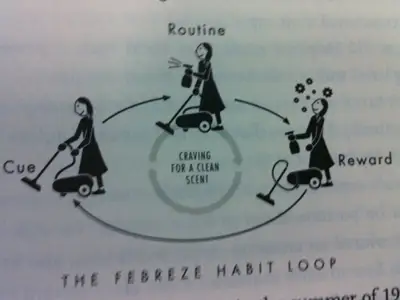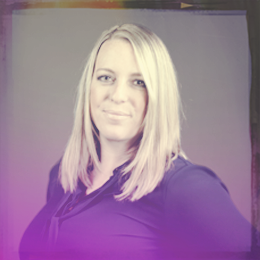About two months ago, while building a scope of work for a project, a client asked why they needed in-depth interviews with their customers as part of the research deliverables. “We have a pretty clear vision for how our website needs to be updated. We have great relationships with our members so they send us feedback, and we’ve got years of survey results,” she said.
Willow works with a lot of association clients, and associations do an awesome job of surveying their members. It seems to be written into the DNA of association leaders… poll the people. Then poll ‘em again. (Oh, and then poll them again.)
You Can’t Read the Label from Inside the Jar
Surveys provide such incredible value. They offer quantifiable data that can be synthesized in multiple ways, and they offer us the ability to say things like, “When asked about our communications, 87% of our members rate our emails as valuable,” and “Among our members, 23% would be interested in resources related to hiring the right talent,” scratching the itch we all have for definitive answers on how to make things better and add more value. Numbers like this give us direction and action steps. They tell us more about what success looks like.
But surveys often don’t give us deep insights. Those insights you can only get by pulling and tugging on that thread until the ambiguity knot actually comes loose. I often find, after reviewing surveys, that I’m left with more questions than answers. It might be my highly analytical nature, but I usually feel that synthesized survey responses are like a pile of rocks, begging to be turned over. “Err … do we know who filled out this survey? How do you think they would feel about getting a phone call from me? With some follow-up questions … ?” This is the yearning for qualitative research.
When my client asked this question, I told her I felt relatively certain that her marketing team’s instincts were valuable and correct. But I also said we can never be sure until we check. Sometimes, even the smartest person can be really wrong. Or, just a little wrong. That doesn’t make us bad people, that simply makes us human, with perceptions built by our own life experiences and upbringing.
Brad Gillum (Willow’s owner and CEO) often says you can’t read the label when you’re inside the jar. It’s why you need customer research. Customers can tell you what the label is saying to them. And they can tell you how the label makes them feel. Now, let’s take that jar analogy a little further: We’re inside this clear jar, and we can’t read the label. Surveying people allows us to look out and see people’s reaction to the label. Is it happiness? Confusion? Shock? Boredom? Interviews and qualitative research allow us to actually talk to them about why they’re making that face.
Back to that client I mention… to her credit, she agreed with my assertion, and invested in the research. And much of the initial strategic direction she provided turned out to be spot on. But guess what we learned? There was a single high-stakes button universally complained about by 100% of the people we consulted. And we wouldn’t have known that without the interviews. The consistency with which people called out that blind spot was a powerful reminder of the need to talk to our customers. Not just survey them. (Guess what? All the members we spoke with would’ve rated their satisfaction with the website as “high” on a written form, and said button likely never would have been mentioned.)
A Breathe of Fresh Air
Still unconvinced? There’s a pretty classic marketing story about Febreze that underscores the power of customer interviews. P&G was trying to sell the spray as the remedy to stinky odors at home, and the market response was underwhelming. The conclusion was that people’s noses adjust to the normal smells in their house, and therefore they don’t feel the need to correct anything. (Read more about what motivated, and DIDN’T motivate the spritz in The Power of Habit.)
P&G embarked on interview-based research with customers (hundreds!) to find out the real story about how the product was being used. A lightbulb went off when one customer said she sprayed Febreeze as a step in her routine. (Which is why this got featured in a book all about habit.) Stinky or not, the house got a spritz because that’s how she did things. Her specific quote was, “Spraying feels like a little mini-celebration when I’m done with a room.” A tiny little cherry on top. A REWARD.

This led P&G to totally reposition the product, adding more perfume to the mix to create a more “branded” scent. Ad campaigns that featured the spray as a satisfying step in cleaning went to market. And within two months, sales doubled. Today, Febreze is a household name — a status they might not have reached without this single, research-driven insight.
Got Questions? Get Answers
What interview-based research might look like for you, is up to you. Willow’s here to help with in-depth interviews if you have the desire for these insights but no bandwidth. Or, if you have the internal team to do it, make time and space to do it in-house. Either way, ask yourself, when was the last time you intentionally spoke to one of your customers or members to get help answering a burning business question? If you’re interested in getting started with this, sit down today and write down the five top questions you’re wrestling with. Then, akin to that classic question, “If I could spend one hour with any one person, living or dead, who would it be?” think… “If I could spend 30 minutes with any of our customers for help with these questions, who would it be?” Pro tip: I often recommend a mix of happy customers/members, dissatisfied customers/members, lost new business prospects, and lapsed or former customers/members for a full range of perspectives.
Because it’s the time of year for goal-setting, think forward to your 2021 plans, and come up with ways you can integrate this type of research into the mix. Want to bounce ideas around? We’re just a click or phone call away.
